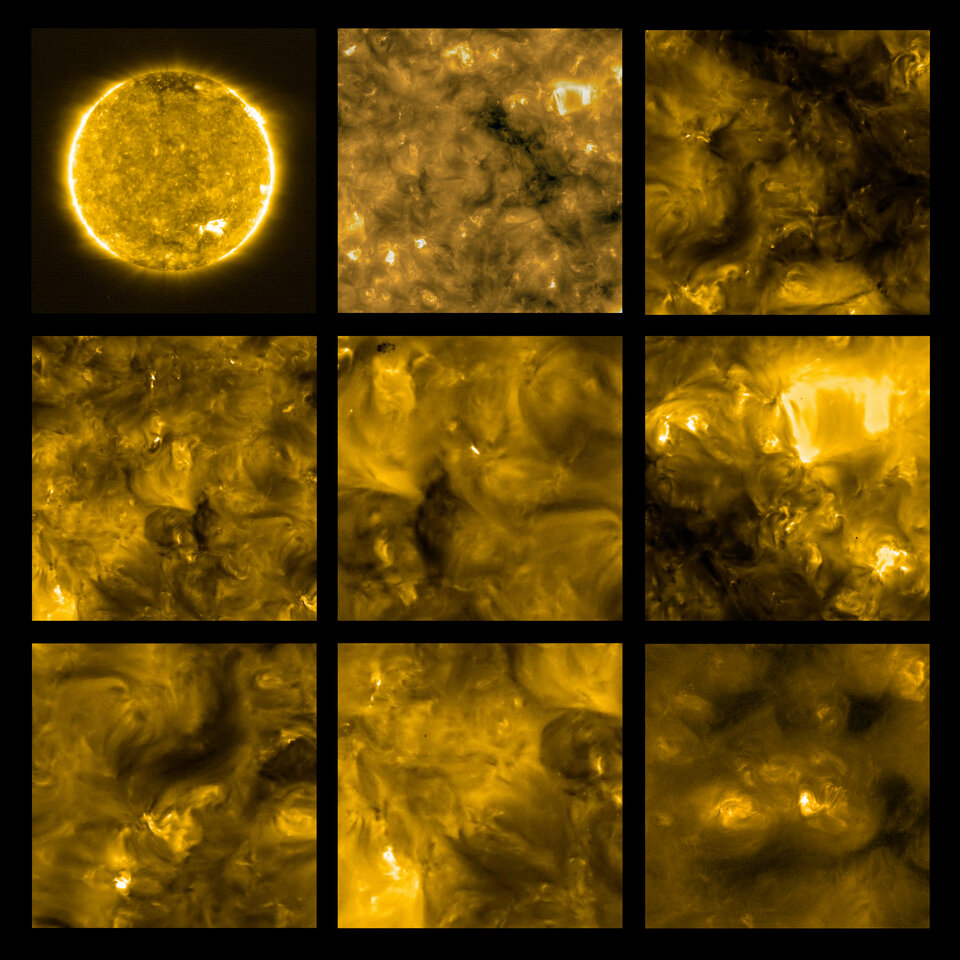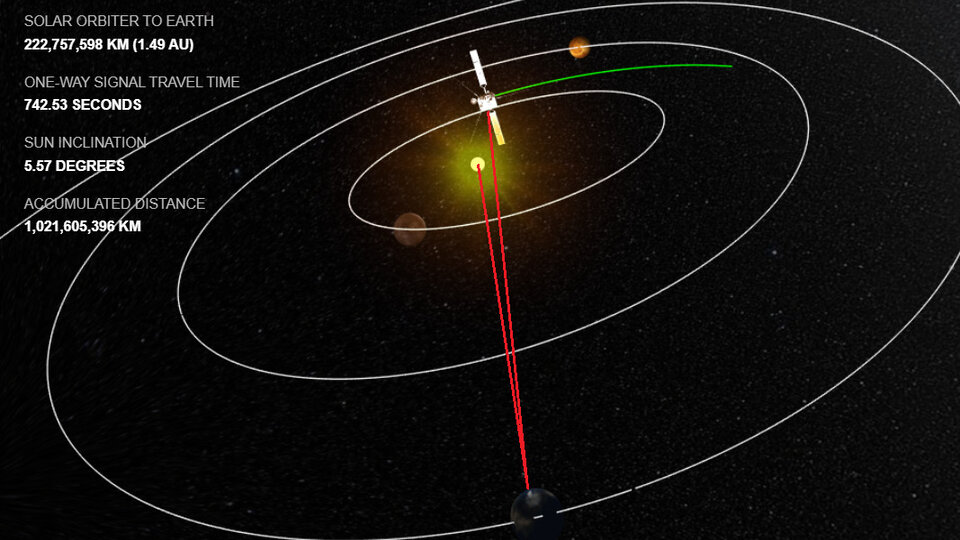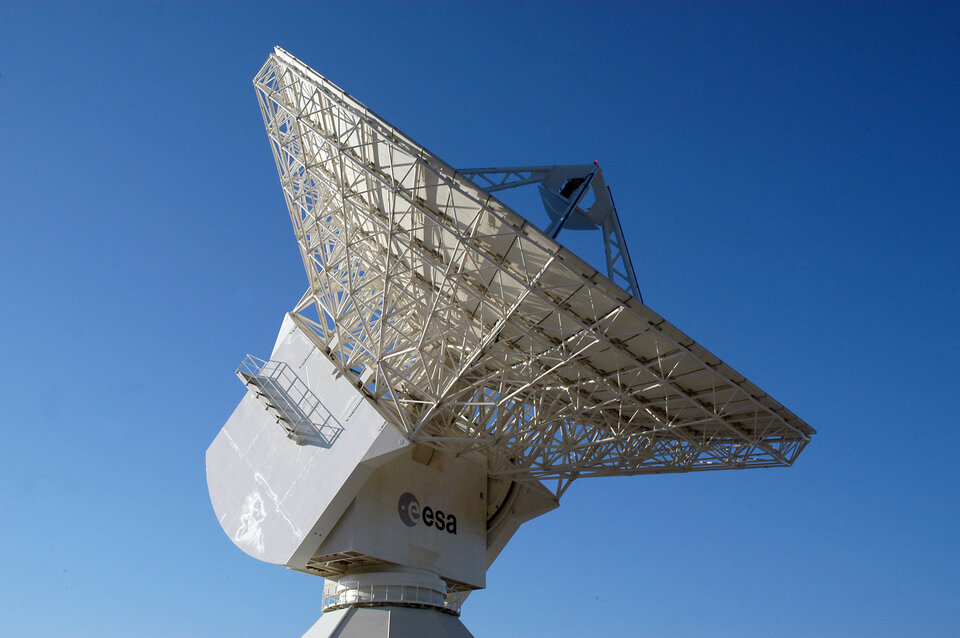Global S&T Development Trend Analysis Platform of Resources and Environment
| ESA’s Solar Orbiter ducks behind the Sun | |
| admin | |
| 2021-02-09 | |
| 发布年 | 2021 |
| 语种 | 英语 |
| 国家 | 欧洲 |
| 领域 | 地球科学 |
| 正文(英文) | What happens when the Solar System's No. 1 source of violent energy interferes with spacecraft communication? Name? Solar Orbiter, or ‘Solo’ as the mission control team fondly call it, is one of the European Space Agency’s pluckiest missions and is now cruising toward the Sun. 
Age: One year old! We launched on 10 February 2020. Granted, it was first powered up on Earth at some point during construction, but launch is ‘when it came alive’. What’s it doing out there? It’s imaging our star, observing the solar wind and unravelling mysteries of the solar cycle. It’s already returned some of the best images of ol’Sol ever, revealing omnipresent miniature solar flares, dubbed ‘campfires’, near the surface. Anything else? Well, it uses prehistoric cave pigment as a coating to withstand temperatures up to 520°C. The Sun’s pretty darn hot, you know. So, what’s happening now? The spacecraft’s orbit is taking it behind the Sun, and starting a few days ago the apparent angle, as seen from Earth, between Solar Orbiter and the Sun started falling below 5 degrees. It’s called ‘conjunction season’ and runs until mid-February. 
Ohhh, will it melt? No. See the bit about cave pigment above. But the Sun’s energetic and unpredictable nature will start making it hard for radio dish antennas on Earth – which will also have to point close to the Sun when pointing at Solar Orbiter – to reliably send or receive signals, or do so very fast, at any rate. Sounds bad. It is – the Sun’s energy can disrupt communication in both directions. Mission controllers will only be able to receive data at about 255 bits per second, or send signals at about 7.8 bits per second. You’re likely too young to remember dial-up modems. Not fast enough for Netflix, but it’s something, isn’t it? Perhaps, but even these piddly data rates aren’t reliable – the radio link might be lost entirely if the Sun so much as even sneezes. 
If the bit rate is so low due to interference from the Sun, why not simply turn off the instruments and coast through the worst part of conjunction? That’s what happens with other, older missions using simpler technology, not to mention Mars Express. And not that there’s any friendly competition between mission control teams. OK, what’s the good news? Our mission planners knew this would happen, so Solar Orbiter was designed to endure long periods of no contact with Earth. The spacecraft can even keep its scientific instruments running autonomously, and simply store all the collected data on board for download later, away from the Sun. I bet there was a rush to get ready for this. We’re spacecraft engineers; we never panic, but we are very good at dealing with contingencies. Which this is not. But, yes, many of us at ESA worked with a ‘sense of urgency’ to prepare and upload three week’s worth of onboard instructions, in case we had no contact at all during conjunction. All while dealing with the critical Venus flyby manoeuvre in December, while uploading a complete new operating system and all while working from our kitchen tables. Now that your bird’s on autopilot, there’s not much to do? Au contraire. We’ve got ‘remote science checkout during solar close approach’ coming up, as well as a special ‘thermal characterisation’ campaign requiring ‘new telemetry modes’ followed by more testing of the radio communication link. Then there are the Venus and Earth flybys later this year, after which we have to get ready for the final science orbit at the end of cruise. Phew! What’s most often heard in the team’s Skype chats? “Cruise was supposed to be quiet…” followed by “... please mute your mic – we hear the cat meowing under the kitchen table...!” |
| URL | 查看原文 |
| 来源平台 | European Space Agency |
| 文献类型 | 新闻 |
| 条目标识符 | http://119.78.100.173/C666/handle/2XK7JSWQ/314778 |
| 专题 | 地球科学 |
| 推荐引用方式 GB/T 7714 | admin. ESA’s Solar Orbiter ducks behind the Sun. 2021. |
| 条目包含的文件 | 条目无相关文件。 | |||||
| 个性服务 |
| 推荐该条目 |
| 保存到收藏夹 |
| 查看访问统计 |
| 导出为Endnote文件 |
| 谷歌学术 |
| 谷歌学术中相似的文章 |
| [admin]的文章 |
| 百度学术 |
| 百度学术中相似的文章 |
| [admin]的文章 |
| 必应学术 |
| 必应学术中相似的文章 |
| [admin]的文章 |
| 相关权益政策 |
| 暂无数据 |
| 收藏/分享 |
除非特别说明,本系统中所有内容都受版权保护,并保留所有权利。
修改评论